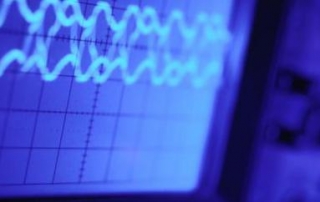Blogs
Important Terminology for Measurement System Selection
Important Terminology for Measurement System Selection Mounting conditions / Mounting mode – to properly measure an object/target with the aid of a laser displacement sensor, you must reflect the light from the object to the receiver. Measurement systems that use a triangulation method for measurement, along with variable surface conditions of the object, have sensor heads that are installed at an angle so that light can be reflected and received in the proper manner. Opaque targets – both the sensor head and the target must be installed parallel to each other so that a portion of light hit the [...]
Important Terminology for Measurement System Selection
Important Terminology for Measurement System Selection Mounting conditions / Mounting mode – to properly measure an object/target with the aid of a laser displacement sensor, you must reflect the light from the object to the receiver. Measurement systems that use a triangulation method for measurement, along with variable surface conditions of the object, have sensor heads that are installed at an angle so that light can be reflected and received in the proper manner. Opaque targets – both the sensor head and the target must be installed parallel to each other so that a portion of light hit the [...]
Enclosure Ratings
Enclosure Ratings When it comes to an enclosure rating a good standard rating system needs to be utilized to define the types of environments in which certain kinds of enclosures cane be used (such as electrical). A rating system also identifies whether a fixed enclosure can stand up to certain environmental conditions. Users as well as manufacturers benefit when quality standards are in place. Overall communication, economics, and safety are improved between the seller and the buyer. Below we will be looking at the National Electrical Manufacturers Association’s (NEMA) rating scale for enclosures. NEMA defines the standards used in [...]
Contact vs Non-Contact Measurements
Contact vs Non-Contact Measurements Contact Sensors: Linear displacement sensors measure the distance between two points or two plane surfaces. Contact gauges imply that the sensor must touch the surfaces. Such sensors could be a LVDT (linear variable differential transformer), string pot gauge (Fig. 1), glass scale gauge, sliding scale, and more. These gauges provide a continuous output of the distance being measured, such as a voltage proportional to the distance, or digital indication in engineering units such as inches or meters. Proximity sensors can be linear but typically are just a switched output indicating when a fixed distance is reached. A [...]
Calibration
Calibration Calibration in measurement technology is the evaluation of measurement values that is delivered by a device that can deliver a calibration standard of known accuracy. Think of this standard as another measurement device of known accuracy. This device would generate the quantity that would be measured, such as voltage. The outcome of the comparison can result in three possible outcomes: no significant error is noted on the device that is being tested, a significant error was noted but no adjustments were made, or an adjustment was made to correct the error to an acceptable level. BIPM The International [...]
What is Calibration, and Why Is It Important?
Calibration Calibration in measurement technology is the evaluation of measurement values that is delivered by a device that can deliver a calibration standard of known accuracy. Think of this standard as another measurement device of known accuracy. This device would generate the quantity that would be measured, such as voltage. The outcome of the comparison can result in three possible outcomes: no significant error is noted on the device that is being tested, a significant error was noted but no adjustments were made, or an adjustment was made to correct the error to an acceptable level. BIPM The International [...]
History of Measurements
The History of Measurements Measurement, loosely defined is the length, amount, or size of something that is measured. Long ago, the idea of a universal measuring system didn’t exist. That was, until the 18th century where measurement became a cohesive system. Before this period, countries such as France had measuring systems for nearly every profession. In 1795 the number of measurements in France alone numbered well over seven hundred. The names for many units of measurement were borrowed from human morphology. For example, the foot, the hand, the pace, etc. Still, however, these units of measurement were not standardized. [...]
Knowledge Center
Knowledge Center
1510A Precision Signal Generator: Best Replacement Product for Discontinued Products
Frustrated with Obsolete Instrumentation Calibration and Test Tools? Try the MTI 1510A Signal Generator Instead The MTI Instruments 1510A portable calibrator comprehensively replaces those old, obsolete devices you had been depending on to test, calibrate, and troubleshoot measurement equipment in your facility. The 1510A is the hand-held signal generator used globally to service flow meters, amplifiers, charge amplifiers, strain gage equipment, digitizers, measurement apparatus – you name it. Key Features of the 1510A Precision Function Generator / Calibrator: The 1510A Precision signal generator is capable of Millivolt level (mV) AC and DC voltage levels Picocoulomb (pC) Charge levels from [...]
Electronic & RF / Radio Frequency Noise
Electrical and RF noise appears in a wide variety of forms. Noise of this nature has a direct effect on electronic and radio frequencies. Electrical and RF will appear in all electronic and RF systems and can directly affect and even limit performance capabilities of a wide variety of systems. The nature of noise is random which means that it’s impossible to eliminate the effects it has on systems. The moment noise has entered a system it’s impossible to remove it. With that being said, however, it is possible to filter out some of the sound (in some instances) though this [...]



